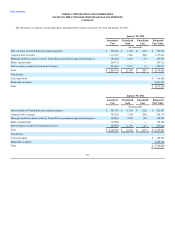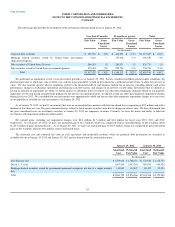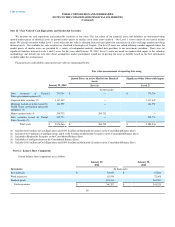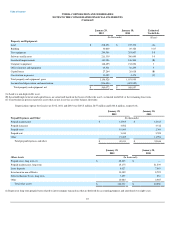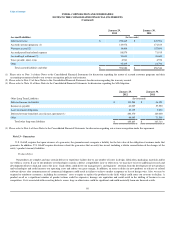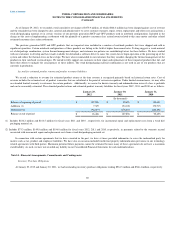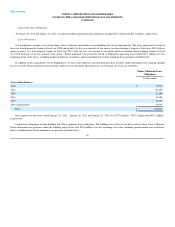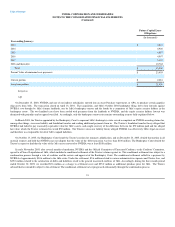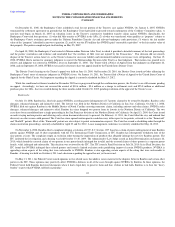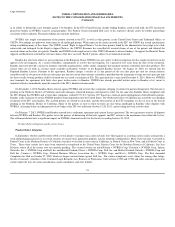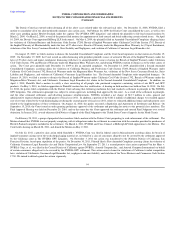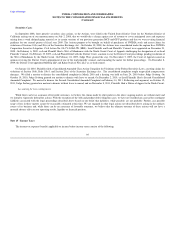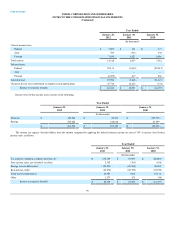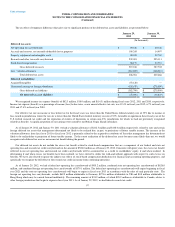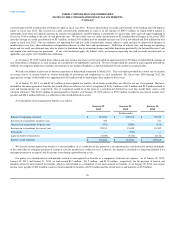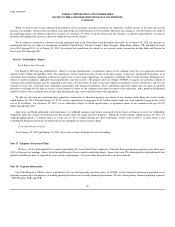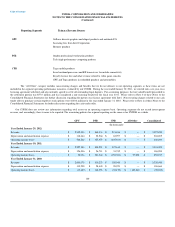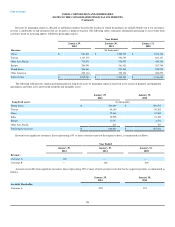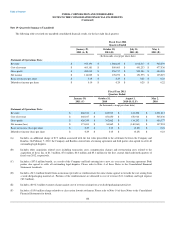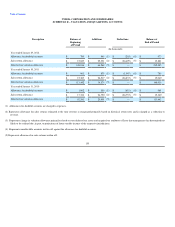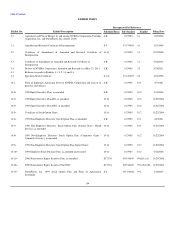NVIDIA 2012 Annual Report Download - page 97
Download and view the complete annual report
Please find page 97 of the 2012 NVIDIA annual report below. You can navigate through the pages in the report by either clicking on the pages listed below, or by using the keyword search tool below to find specific information within the annual report.
Table of Contents NVIDIA CORPORATION AND SUBSIDIARIES
NOTES TO THE CONSOLIDATED FINANCIAL STATEMENTS
(Continued)
The District Court has entered orders deeming all of the above cases related under the relevant local rules. On December 11, 2008, NVIDIA filed a
motion to consolidate all of the aforementioned consumer class action cases. On February 26, 2009, the District Court consolidated the cases, as well as two
other cases pending against Hewlett Packard, under the caption “The NVIDIA GPU Litigation” and ordered the plaintiffs to file lead counsel motions by
March 2, 2009. On March 2, 2009, several of the parties filed motions for appointment of lead counsel and briefs addressing certain related issues. On April
10, 2009, the District Court appointed Milberg LLP lead counsel. On May 6, 2009, the plaintiffs filed an Amended Consolidated Complaint, alleging claims
for violations of California Business and Professions Code Section 17200, Breach of Implied Warranty under California Civil Code Section 1792, Breach of
the Implied Warranty of Merchantability under the laws of 27 other states, Breach of Warranty under the Magnuson-Moss Warranty Act, Unjust Enrichment,
violations of the New Jersey Consumer Fraud Act, Strict Liability and Negligence, and violation of California's Consumer Legal Remedies Act.
On August 19, 2009, we filed a motion to dismiss the Amended Consolidated Complaint, and the Court heard arguments on that motion on October 19,
2009. On November 19, 2009, the Court issued an order dismissing with prejudice plaintiffs causes of action for Breach of the Implied Warranty under the
laws of 27 other states and unjust enrichment, dismissing with leave to amend plaintiffs' causes of action for Breach of Implied Warranty under California
Civil Code Section 1792 and Breach of Warranty under the Magnuson-Moss Warranty Act, and denying NVIDIA's motion to dismiss as to the other causes of
action. The Court gave plaintiffs until December 14, 2009 to file an amended complaint. On December 14, 2009, plaintiffs filed a Second Amended
Consolidated Complaint, asserting claims for violations of California Business and Professions Code Section 17200, Breach of Implied Warranty under
California Civil Code Section 1792, Breach of Warranty under the Magnuson-Moss Warranty Act, violations of the New Jersey Consumer Fraud Act, Strict
Liability and Negligence, and violation of California's Consumer Legal Remedies Act. The Second Amended Complaint seeks unspecified damages. On
January 19, 2010, we filed a motion to dismiss the Breach of Implied Warranty under California Civil Code Section 1792, Breach of Warranty under the
Magnuson-Moss Warranty Act, and California's Consumer Legal Remedies Act claims in the Second Amended Consolidated Complaint. In addition, on
April 1, 2010, Plaintiffs filed a motion to certify a class consisting of all people who purchased computers containing certain of our MCP and GPU
products. On May 3, 2010, we filed an opposition to Plaintiffs' motion for class certification. A hearing on both motions was held on June 14, 2010. On July
16, 2010, the parties filed a stipulation with the District Court advising that, following mediation they had reached a settlement in principle in The NVIDIA
GPU Litigation. The settlement in principle was subject to certain approvals, including final approval by the court. As a result of the settlement in principle,
and the other estimated settlement, and offsetting insurance reimbursements, NVIDIA recorded a net charge of $12.7 million to sales, general and
administrative expense during the second quarter of fiscal year 2011. In addition, a portion of the $181.2 million of additional charges we recorded against
cost of revenue related to the weak die/packaging set during the second quarter of fiscal year 2011, relates to estimated additional repair and replacement costs
related to the implementation of these settlements. On August 12, 2010, the parties executed a Stipulation and Agreement of Settlement and Release. On
September 15, 2010, the Court issued an order granting preliminary approval of the settlement and providing for notice to the potential class members. The
Final Approval Hearing was held on December 20, 2010, and on that same day the Court approved the settlement and entered Final Judgment over several
objections. In January 2011, several objectors filed Notices of Appeal of the Final Judgment to the United States Court of Appeals for the Ninth Circuit.
On February 28, 2011, a group of purported class members filed a motion with the District Court purporting to seek enforcement of the settlement. The
Motion claimed that NVIDIA was not properly complying with its obligations under the settlement in connection with the remedies provided to purchasers of
Hewlett-Packard computers included in the settlement. On March 4, 2011, NVIDIA and Class Counsel at Milberg LLP filed oppositions to the Motion. The
Court held a hearing on March 28, 2011, and denied the Motion on May 2, 2011.
On July 22, 2011, a putative class action titled Granfield v. NVIDIA Corp. was filed in federal court in Massachusetts asserting claims for breach of
implied warranties arising out of the weak die/packaging material set, on behalf of a class of consumers alleged to not be covered by the settlement approved
by the California court in The NVIDIA GPU Litigation. On November 3, 2011 the action was transferred to the Northern District of California, San
Francisco Division, based upon stipulation of the parties. On December 30, 2011, Plaintiff filed a First Amended Complaint asserting claims for violation of
California Consumers Legal Remedies Act and Unfair Competition Law. On September 27, 2011, a second putative class action captioned Van der Maas v.
NVIDIA Corp., et al., was filed in the Central District of California against NVIDIA, Asustek Computer Inc., and Asustek Computer International on behalf
of certain consumers alleged not to be covered by the NVIDIA GPU settlement. This action asserts claims for violations of California's unfair competition
laws, violation of California's Consumer Legal Remedies Act, negligence and strict liability, and violation of the Texas Business and Commerce Code Section
17.50. We intend to defend against the actions vigorously.
94


